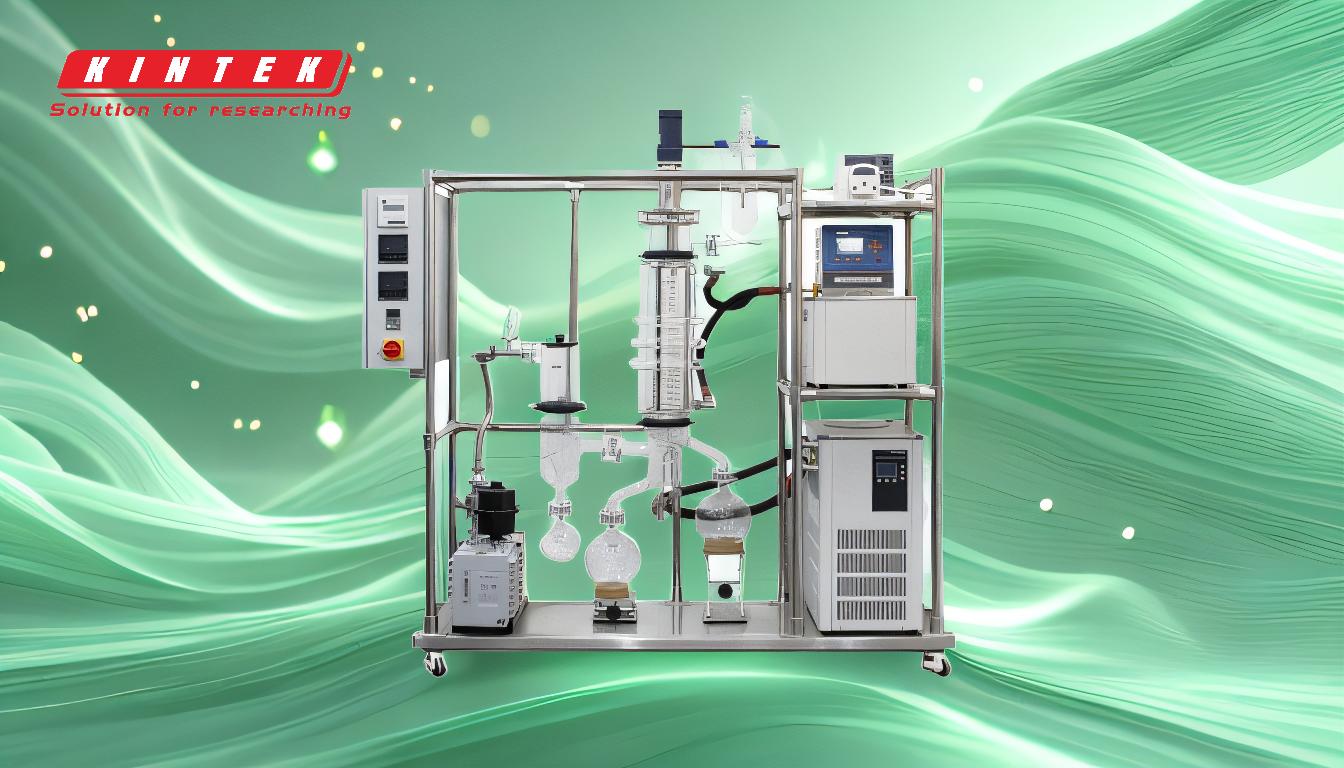Fractional distillation and destructive distillation are two distinct processes used in chemistry and industry, each with unique principles, applications, and outcomes. Fractional distillation separates liquid mixtures based on their boiling points using a fractionating column, while destructive distillation involves heating organic materials in the absence of air to break them down into simpler components. The key differences lie in their mechanisms, equipment, and the nature of the products they yield. Fractional distillation is non-destructive and focuses on separating components, whereas destructive distillation decomposes materials into new compounds.
Key Points Explained:

-
Definition and Purpose:
- Fractional Distillation: This process is used to separate a mixture of liquids with close boiling points. It relies on repeated cycles of evaporation and condensation within a fractionating column to achieve separation.
- Destructive Distillation: This process involves heating organic materials (like coal, wood, or biomass) in the absence of air, causing them to decompose into simpler substances such as gases, liquids, and solids.
-
Mechanism:
-
Fractional Distillation:
- Utilizes a fractionating column with a temperature gradient.
- The mixture is heated, and components evaporate at different temperatures.
- Vapors rise through the column, condense, and re-evaporate multiple times, enhancing separation.
-
Destructive Distillation:
- Involves pyrolysis (thermal decomposition) of materials in an oxygen-free environment.
- The process breaks down complex organic compounds into smaller molecules like gases (e.g., methane), liquids (e.g., tar), and solids (e.g., charcoal).
-
Fractional Distillation:
-
Equipment:
-
Fractional Distillation:
- Requires a fractionating column, condenser, and collection vessels.
- The column provides a large surface area for repeated condensation and evaporation.
-
Destructive Distillation:
- Uses a sealed retort or reactor to prevent air entry.
- Products are collected in separate chambers for gases, liquids, and solids.
-
Fractional Distillation:
-
Applications:
-
Fractional Distillation:
- Commonly used in petroleum refining to separate crude oil into fractions like gasoline, diesel, and kerosene.
- Also used in the chemical industry for purifying solvents and separating mixtures.
-
Destructive Distillation:
- Historically used to produce coal gas and coke from coal.
- Modern applications include biomass conversion for biochar, syngas, and bio-oil production.
-
Fractional Distillation:
-
Products:
-
Fractional Distillation:
- Yields purified liquid fractions with minimal chemical change.
- Examples include ethanol-water separation or hydrocarbon fractions.
-
Destructive Distillation:
- Produces a range of new chemical compounds, including gases (e.g., hydrogen, methane), liquids (e.g., tar, creosote), and solids (e.g., charcoal, coke).
-
Fractional Distillation:
-
Key Differences:
-
Fractional Distillation:
- Non-destructive process.
- Focuses on physical separation based on boiling points.
- Requires precise temperature control and a fractionating column.
-
Destructive Distillation:
- Destructive process that breaks down complex materials.
- Involves chemical changes and the formation of new compounds.
- Operates in an oxygen-free environment to prevent combustion.
-
Fractional Distillation:
-
Suitability:
-
Fractional Distillation:
- Ideal for separating liquid mixtures with similar boiling points.
- Suitable for applications requiring high-purity components.
-
Destructive Distillation:
- Best for decomposing organic materials into useful byproducts.
- Used in industries like energy, agriculture, and waste management.
-
Fractional Distillation:
In summary, fractional distillation is a separation technique for liquid mixtures, while destructive distillation is a decomposition process for organic materials. The choice between the two depends on the desired outcome: physical separation or chemical breakdown.
Summary Table:
| Aspect | Fractional Distillation | Destructive Distillation |
|---|---|---|
| Purpose | Separates liquid mixtures based on boiling points. | Decomposes organic materials into simpler compounds. |
| Mechanism | Repeated evaporation and condensation in a column. | Thermal decomposition in an oxygen-free environment. |
| Equipment | Fractionating column, condenser, collection vessels. | Sealed retort or reactor, separate chambers for products. |
| Applications | Petroleum refining, chemical purification. | Coal gas production, biomass conversion. |
| Products | Purified liquid fractions (e.g., gasoline, ethanol). | Gases (e.g., methane), liquids (e.g., tar), solids (e.g., charcoal). |
| Key Differences | Non-destructive, physical separation. | Destructive, chemical breakdown. |
| Suitability | Ideal for liquid mixtures with similar boiling points. | Best for decomposing organic materials into useful byproducts. |
Need help choosing the right distillation process for your application? Contact our experts today!









